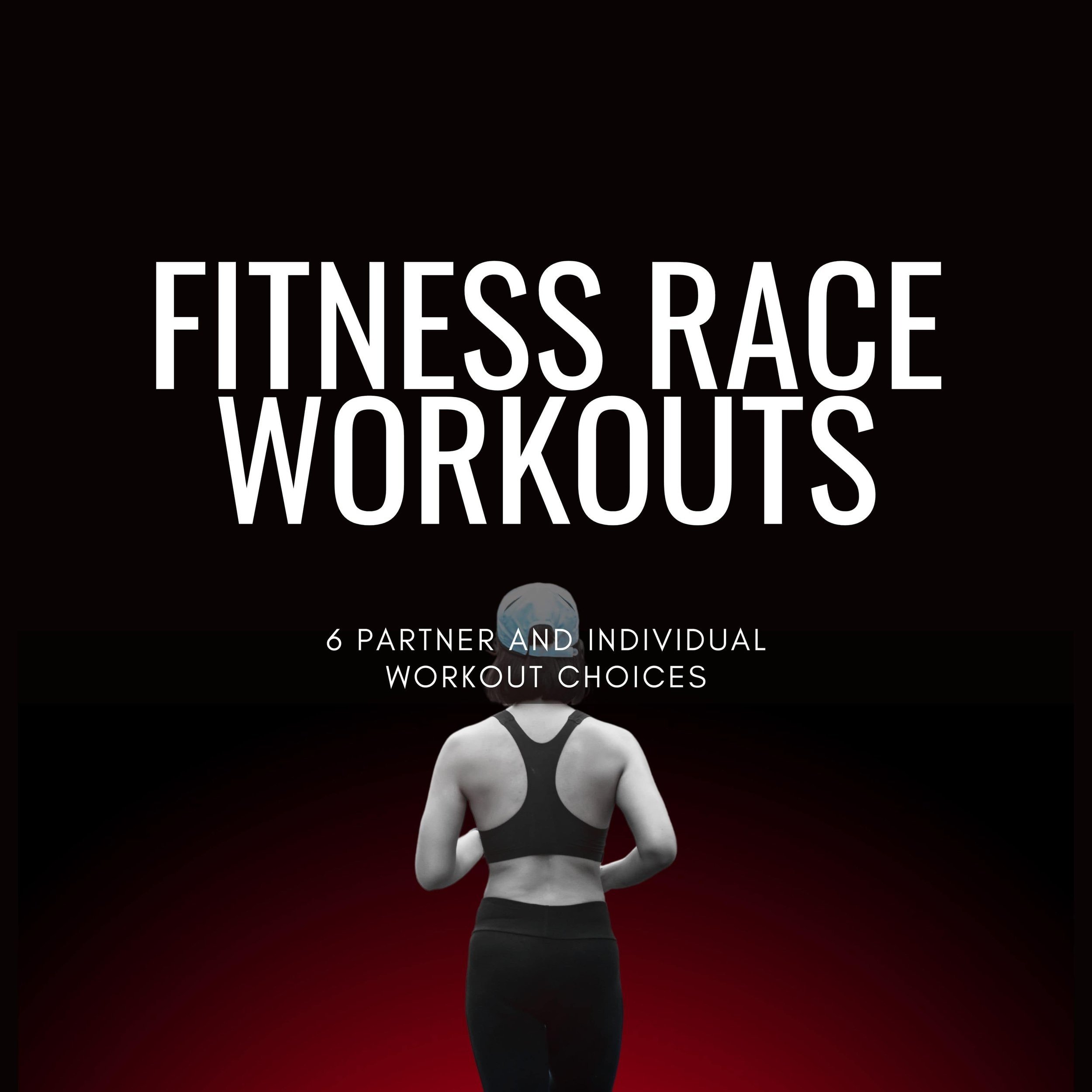
FITNESS RACE WORKOUTS: 6 PARTNER AND INDIVIDUAL WORKOUT OPTIONS
Understanding the Demands of Fitness Race Training
Fitness races are an exciting blend of functional strength, muscular endurance, and sustained aerobic output—all packed into one intense, repeatable race format. Unlike traditional gym workouts or obstacle courses, fitness races challenge athletes to maintain high effort across multiple stations and long distances, all while managing fatigue, transitions, and mental pacing.
Success in these events depends on:
Aerobic capacity – to handle repeated bouts of running and high-rep movements
Muscular endurance – especially in the legs, core, and grip
Functional strength – for sled work, carries, lunges, and more
Pacing strategy – to stay consistent without redlining too early
Mental grit – to push through discomfort over 60+ minutes of effort
The workouts in this article are designed to reflect these key demands—offering both individual and partner training sessions that simulate the race environment, build your engine, and prepare you for the unique challenge of fitness race events.

THE POWER OF DAILY MOVEMENT: WHY WALKING EVERY DAY CHANGES EVERYTHING
In a world that moves fast, sometimes the simplest habits have the most profound impact—and one of the most underrated, life-changing habits is this:

The Physiology behind fitness races of the future
While CrossFit emphasizes constantly varied functional movements using a broad range of energy systems, Fitness Races is a fixed-format endurance event designed to test aerobic capacity and muscular stamina under consistent, measurable standards.
Fitness Races are less skill-intensive but far more grind-based, favouring those who can maintain output over 60+ minutes, with pacing and fatigue resistance being key to success.

The Power of the Hang: A Daily Habit for Pain-Free Shoulders
There’s a simple, free, and wildly underrated practice that could change your shoulder health forever: hanging. That’s right—grabbing onto a pull-up bar, a set of rings, or even monkey bars and letting your body dangle. It might sound too good to be true, but if you’ve got shoulder pain, want to improve your grip, or just want to add years to your life, then this daily habit might be exactly what you need.

The Benefits of Hot Water Immersion
Hot water immersion (HWI), including hot baths, hydrotherapy, and hot tubs, has been used for centuries as a recovery and relaxation tool. In the context of modern sports and weightlifting, HWI has emerged as a scientifically supported recovery method that aids in muscle relaxation, circulation improvement, and overall nervous system restoration.
This eBook explores the science behind hot water immersion, its benefits for weightlifters and athletes, recommended protocols, and its role in optimizing recovery. Additionally, we examine the role of Epsom salt in baths and its claimed therapeutic effects.

Book Review - Shoulder Pain? The Solution and Prevention - Dr. John M. Kirsch
Shoulder pain is a common issue that affects athletes, fitness enthusiasts, and everyday individuals alike. Dr. John M. Kirsch, an orthopedic surgeon, presents a simple yet highly effective approach to alleviating and preventing shoulder pain in his book "Shoulder Pain? The Solution & Prevention." This review will summarize the key concepts of the book and provide a practical guide for implementing Kirsch's method into daily life.

The Ice Myth: Why Ice is Not The Answer For Sports Injurues
Zone 2 training, characterized by low-intensity, steady-state cardio, is an essential component of endurance training and cardiovascular health. It enhances aerobic capacity, improves mitochondrial density, and optimizes fat metabolism. Measuring performance in Zone 2 using watts per kilogram of body weight (W/kg) provides a standardized, scalable way to track improvements across individuals of different sizes and fitness levels. This article will explore how to use W/kg as a reference tool, calculate it, track improvements, and understand its significance.

Zone 2 - Tracking Performance using Watts:Kg
Zone 2 training, characterized by low-intensity, steady-state cardio, is an essential component of endurance training and cardiovascular health. It enhances aerobic capacity, improves mitochondrial density, and optimizes fat metabolism. Measuring performance in Zone 2 using watts per kilogram of body weight (W/kg) provides a standardized, scalable way to track improvements across individuals of different sizes and fitness levels. This article will explore how to use W/kg as a reference tool, calculate it, track improvements, and understand its significance.
